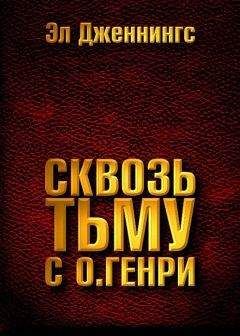Генри Минцберг - Структура в кулаке. Создание эффективной организации

Помощь проекту
Структура в кулаке. Создание эффективной организации читать книгу онлайн
Интерес к организации японских предприятий вызван в основном их миссионерскими характеристиками, которые резко контрастируют с механистическими бюрократиями Запада. Запад никогда не знал эры миссионерства, когда бы эта конфигурация была в моде. Но, возможно, наши потомки в своем стремлении избавиться от неустойчивости и безличных отношений «постадхократической» эпохи при структурировании организаций будут все более и более обращаться к идеологии и миссионерской конфигурации.
И последнее. Зачем представлять шестую конфигурацию в этой части наших рассуждений? Затем, что она имеет важное значение для эффективного структурирования организаций и, по-видимому, ее роль будет возрастать. В нашем пятиугольнике в действительности следует видеть шестиугольник. Но не только по этой причине, а еще и потому, что читатель должен подвергнуть сомнению основное допущение этой книги. Мы постоянно подразумевали, что эффективное структурирование организаций – своего рода составная картинка, «паззл»: «Вот отдельные кусочки картины – пять частей организации, пять механизмов координации, девять параметров дизайна, четыре набора ситуационных факторов. Теперь давайте посмотрим, как они совмещаются друг с другом. Глядите, их можно собрать пятью способами. Чтобы спроектировать эффективную организацию, необходимо выбрать один из них. Или по крайней мере логическую композицию из всех пяти. Определите вашу ситуацию, а затем расставьте элементы по своим местам (так же, как профессиональная бюрократия сортирует своих клиентов)».
Это имеет смысл для многих организаций (как и для большинства клиентов профессиональной бюрократии). Но не для всех. Некоторым необходимо уйти от стандартных решений (как и клиентам, чьи проблемы уникальны, лучше обратиться в адхократию). Другими словами, этим организациям следует создать свои собственные конфигурации – конструктор «Lego» вместо «пазла», – построив новые, ранее не встречавшиеся, но не менее последовательные структуры. Поэтому мы предлагаем заключительную гипотезу организационной эффективности, хотя и совместимую с требованиями прочих гипотез о соответствии и последовательности, но превышающую их. Мы называем ее гипотезой создания: эффективное структурирование иногда требует создания новой конфигурации, оригинальной, но все же последовательной комбинации параметров дизайна и ситуационных факторов. Не всякая организация способна создать целую новую структурную форму. Но некоторые, чтобы быть по-настоящему эффективными, должны это сделать. Именно поэтому мысль тех, кто владеет истинным волшебством, идет дальше пяти.
Однажды уже почтенная госпожа Раку спустилась с пятьдесят пятого этажа, на котором находился ее офис, чтобы принять участие в торжественной церемонии на крупнейшей фабрике Ceramico. На улице она поскользнулась и упала в грязь. Чувство досады и раздражения из-за падения и испачканного платья внезапно сменилось глубокой ностальгией, так как госпожа Раку осознала, что с тех пор, как она покинула мастерскую, это был ее первый реальный контакт с землей. Вдруг она поняла, что создание цветочных горшков для нее важнее, чем сумма денег, которую она за них получает. Потому у организации появилась новая миссия – создание красивых, но функциональных изделий ручной работы – и была разработана способная отразить новую идеологию структура. В качестве своего последнего шага на посту президента компании госпожа Раку в последний раз изменила название организации – на «Гончаров Земли».
Литература
Ackerman, R. W., The Social Challenge to Business- Cambridge, Mass.: Harvard University Press, 1975.
Ansoff, H. I., Corporate Structure: Present and Future. Working paper, European Institute for Advanced Studies in Management. Brussels, Belgium, 1974.
Becker, S. W., and G. Gordon, «An Entrepreneurial Theory of Formal Organizations; Part 1: Patterns of Formal Organizations,» Administrative Science Quarterly, 1966-67, pp. 315-44. Bennete, R. C., General Motors (F): Organizing a Corporate Purchase Agreement. Case study, copyright by the President and Fellows of Harvard College-Cambridge, Mass.: Harvard Business School, 1977.
Bennis, W. G., «The Coming Death of Bureaucracy,» Think Magazine, November-December 1966, pp. 30-35,
Bennis, W. G., and P. L. Slater, The Temporary Society. New York: Harper & Row, 1964.
Beyer, J. M., and T. M. Lodahl, «А Comparative Study of Patterns of Influence in United States and English Universities,» Administrative Science Quarterly, 1976, pp. 104-29.
Bidwell, C. E., «The School as a Formal Organization,» Chapter 23 in J. G. March, ed.,. The Handbook of Organizations. Chicago, 111,: Rand McNally, 1965.
Blau, P. M., «The Hierarchy of Authority in Organizations,» American Journal of Sociology, 1967-68, pp. 453-67.
Blau, P. M., and P. A. Schoenherr, The Structure of Organizations, New York; Basic Books, 1971. Bower, J. L., «Planning within the Firm» The American Economic Review, 1970, pp. 186-94. Braverman, H., Labor and Monopoly Capital: The Degradation of Work in the Twentieth Century. New York: Monthly Review Press, 1974.
Burns, T., «Mechanistic and Organismic Structures,» in D. S. Pugh, ed., Organization Theory. New York: Penguin, 1971.
Burns, T., and C. M. Stalker, The Management of Innovation, 2nd ed. London: Tavistock, 1966. Chandler, A. D., Strategy and Structure. Cambridge, Mass.: The M.LT. Press, 1962.
Chandler, M. K., and L. R. sayles, Managing Large Systems. New York: Harper & Row, 1971. Charms, M. P., «Breaking the Tradition Barrier: Managing, Integration in Health Care Facilities,» Health Care Management Review, Winter 1976, pp. 55-67.
Crozier, M., The Bureaucratic Phenomenon, Eng. trans. Chicago: University of Chicago Press, 1964. Emery, F. E., «Democratization of the Work Place: A Historical Review of Studies,» «International Studies of Management and Organization, 1971, pp. 181-201.
Fayol, H., General and Industrial Management. New York: Pitman, 1949. First published in French in 1916.
Feld, M. D., «Information and Authority: The Structure of Military Organization»
American Sociological Review, 1959, pp. 15-22.
Fiedler, F, F., «The Contingency Model: A Theory of Leadership Effectiveness,» in H. Proshansky and B. Seidenberg, eds., Basic Studies in Soda! Psychology. New York: Holt., inehart & Winston, 1966.
Frank, A. G., «Goal Ambiguity and Conflicting Standards: An Approach to the Study of Organization,» Human Organization, Winter 1958-59, pp. 8-13.
Franko, L, G., «The Move toward a Multidivisional Structure in European Organizations» Administrative Science Quarterly, 1974, pp. 493-506.
Galbraith, J. K., The New Industrial State. Boston: Houghton Mifflin, 1967,
Galbraith, J. R., Designing Complex Organizations. Reading, Mass.: Addison-Wesley, 1973. Galbraith, J. R., “Matrix Organization Designs,” Business Horizons, February 1971, pp. 9-40. Gerth, H. H., and C. W. Mills, eds., From Max Weber: Essays in Sociology New York: Oxford University Press, 1958.
Goodman, L. P., and R. A. Goodman, «Theater as a Temporary System,» Management Review, Winter 1972, pp. 103-8,
Goodman, R. A., and L. P. Goodman, «Some Management Issues in Temporary Systems: A Study of Professional Development and Manpower-Theater Case,» Administrative Science Quarterly, 1976, pp. 494-501
Gosselin, R., A Study of the Interdependence of Medical Specialists in Quebec Teaching
Hospitals, Ph. D. thesis, Faculty of Management, McGill University, Montreal, 1978. Guetzkow, H., and H. A, simon, «The Impact of Certain Communication Nets upon Organization and Performance in Task-Oriented Croups,» Management Science, 1954-55, pp. 233-50.
Haire, M., Psychology in Management. New York: McGraw-Hill, 1964.
Hatvany, N. G., «Review of “A Profile of Tomorrow”s Police Officer and His Organization’ by Victor Cizanckas,» in A. M. Jaeger, ed., Seminars on Organizations, Stanford, Calif.; Stanford University, winter and Spring, 1976, pp. 72-74.
Herzberg, F., «One More Time: How Do You Motivate Employees?» Harvard Business Review. January-February 1968, pp. 53-62.
Hickson, D. J., «A Convergence in Organization Theory,» Administrative Science Quarterly, 1966-67, pp. 224-37.
Holden, P. E., C. A. Pederson, and G. E. Germane, Top Management. New York: McGraw-Hill, 1968,
Hunt, R. G., «Technology and Organization,’’ Academy of Management Journal, 1970, pp. 235-52.
Jay, A., Management and Machiavelli. New York, Penguin Books, 1970.
Kaufman, H., and D. Shidman, «The Morphology of Organization,» Administrative Science Quarterly, 1970, pp. 439-45.
Khandwalla, P. N., «Effect of Competition on the Structure of Top Management Control,» Academy of Management Journal, 1973a, pp. 285-95.
Khandwall.a, P. N., «Mass Output Orientation of Operations Technology and Organizational Structure,» Administrative Science Quarterly. 1974, pp. 74-97. Khandwall.a, P. N., Report on the Influence of the Techno-Economic Environment on Firms’ Organization. Report of research findings presented to participating corporations in a study of organizational structure, McGill University, Montreal, 1971.
Khandwall.a, P. N., «Viable and Effective Organizational Designs of Firms,» Academy of Management Journal, 1973b., pp. 481-95,
Knight-, K., «Matrix Organization; A Review,» The journal of Management Studies, 1976, pp. 111-30. Kochen, M., and K, W. Deutsch, «Decentralization by Function and Location,» Management Science. 1973, pp. 841-55.
Kover, A. J., «Reorganization in an Advertising Agency: A Case Study of a Decrease in integration,» Human Organization, 1963-64, pp. 252-59.
Lawrence, P. R., and J. W. Lorsch, Organization and Environment. Homewood, 111.: Richard D, irwin, 1967.
LitzingerI, W., A, Mayrinac, and J. Wagle, «The Manned Spacecraft Center in Houston: The Practice of Matrix Management,» International Review of Administrative Sciences, 1970, pp. 1-8, lorsch, J. W., and S. A. ALLEN 111, Managing Diversity and Interdependence. Cambridge, Mass.: Division of Research, Graduate School of Business Administration, Harvard University, 1973,
Maslow, A. H., Motivation and Personality. New York: Harper & Row, 1954.
Melcher, A. J., Structure and Process of Organizations: A Systems Approach. Englewood Cliffs, N.J.: Prentice-Hall, 1976.
Miller, E. J., «Technology, Territory and Time: The Internal Differentiation of Complex Production Systems,» Human Relations, 1959, pp. 243-72,
Mintzbfrg, H., The Nature of Managerial Work, New York: Harper & Row, 1973a. Mintzbfrg, H., «Strategy-Making in Three Modes,» California Management Review, winter 1973b, pp. 44-53.
Mintzbfrg, H., The Structure of Organizations. Englewood Cliffs, N.J.: Prentice-Hall, 1979. Montagna, P. D., «Professionalization and Bureaucratization in Large Professional Organizations,» The American Journal of Sociology, 1968, pp. 138-45.
Mover, R. C., «Berle and Means Revisited: The Conglomerate Merger,» Business and Society, Spring 1970, pp. 20-29,
Paterson, T. T., Management Theory. London; Business Publications Ltd., 1969.
Perrow, C., «Is Business Really Changing?» Organizational Dynamics, Summer 1974, pp. 31-44. Perrow, C., Organizational Analysis: A Sociological Review. Belmont, Calif.: Wadsworth, Pfiffner, J, M., and F. sherwood, Administrative Organization. Englewood Cliffs, N.J.: Prentice-Hall, 1960.

























